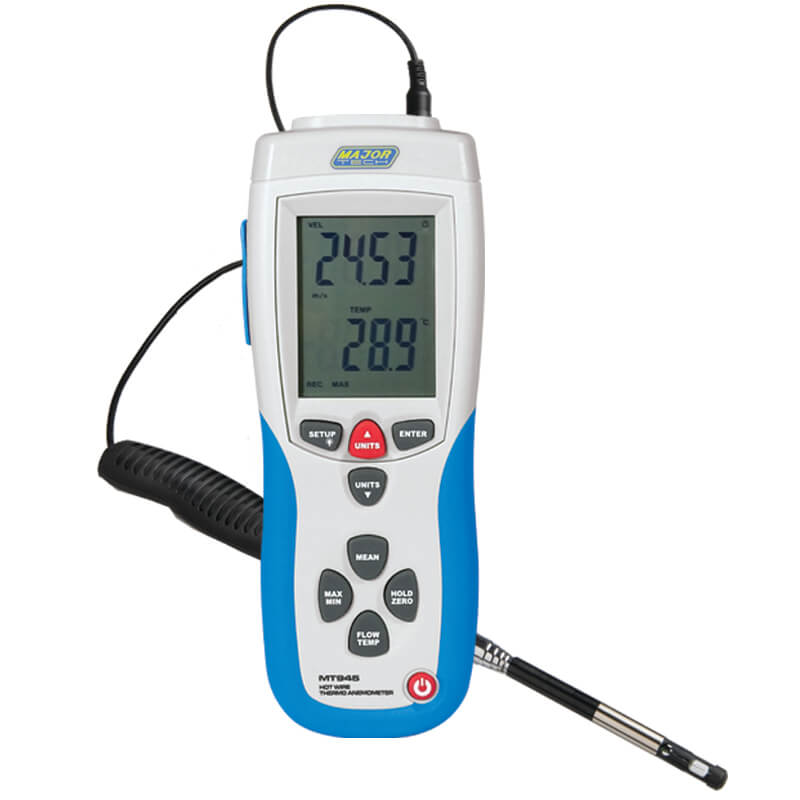Why an Anemometer is Vital for Your Environmental Data Collection
Why an Anemometer is Vital for Your Environmental Data Collection
Blog Article
All You Need to Learn About Anemometers: Just How They Work, Why They Matter, and Where to Make use of Them
Anemometers, though commonly overlooked in the world of scientific instruments, play an essential duty in various areas, using beneficial insights right into wind speed and air flow patterns. Understanding the mechanics behind these devices is important for any person looking for to harness the power of this information. From meteorologists tracking weather condition patterns to engineers creating frameworks with wind lots in mind, the applications of anemometers are far-reaching and diverse. As we look into the details of anemometer innovation, we will reveal the inner functions of these devices, their significance, and the key factors to consider when picking the ideal anemometer for details applications.

Anemometer Essentials
A crucial tool used to determine wind speed and instructions, the anemometer plays an important function in weather forecasting and numerous industries. An anemometer usually contains 3 or four mugs that turn in the wind, a vane that directs right into the wind, and sensors to track the turnings or movements. By calculating the turnings or movements over a certain period, the anemometer can figure out wind rate. The vane assists establish wind instructions by directing into the wind, supplying beneficial information for weather condition projecting, air travel, maritime procedures, environmental tracking, and wind energy applications.
There are various types of anemometers readily available, consisting of mug anemometers, vane anemometers, hot-wire anemometers, and sonic anemometers, each with its special features and applications. Mug anemometers are commonly used for basic wind speed dimensions, while vane anemometers are chosen for directional dimensions.
Principles of Anemometer Procedure
Structure on the foundational understanding of anemometer essentials, the principles of anemometer procedure elucidate the mechanics behind wind rate and direction dimensions. Mug anemometers, for circumstances, have three or more mugs that capture the wind, causing them to spin much faster as the wind rate boosts. Hot-wire anemometers rely on a heated cord that cools down as wind passes over it, with the rate of cooling down identifying the wind rate.
Significance of Anemometers
The value of anemometers in weather forecasting and various markets can not be overemphasized. Anemometers play an important function in measuring wind rate and direction, giving crucial data for weather condition projecting, climate researches, environmental tracking, and air travel procedures. Meteorologists count on anemometers to gather exact wind data, aiding them comprehend climate patterns, anticipate tornados, and issue timely cautions to the public. In markets such as building and construction, farming, sustainable energy, and maritime procedures, anemometers are utilized to maximize processes, guarantee safety, and enhance efficiency. For instance, wind ranch drivers use anemometers to analyze wind problems and make best use of electrical power production from wind generators. In the maritime industry, anemometers help ship navigating by offering real-time wind details to captains, helping them make educated choices to make certain safe trips. Generally, anemometers are vital tools that add significantly to safety, effectiveness, and educated decision-making in weather forecasting and a large range of industries.
Applications Throughout Numerous Industries
Applications of anemometers look here cover throughout diverse industries, showcasing their flexibility and energy beyond weather forecasting. In the renewable resource industry, anemometers play a crucial role in evaluating wind problems for wind farm placements, making sure optimal energy production. Industries like building and mining make use of anemometers to monitor wind rates, vital for security methods, particularly when operating at heights or in open-pit mines where solid winds can posture threats. Anemometers are likewise indispensable in the air travel industry, aiding pilots in recognizing airspeed and wind direction for secure take-offs and touchdowns. The maritime Discover More sector advantages from anemometers for ship navigating, aiding sailors prepare for weather condition modifications and change courses accordingly. In farming, anemometers aid farmers in taking care of crop spraying by offering real-time information on wind speed to avoid drift. Moreover, anemometers locate applications in cooling and heating systems to optimize air movement and enhance power performance in structures. The varied use instances of anemometers highlight their value across different markets, highlighting their indispensable duty in enhancing functional security and efficiency (anemometer).

Selecting the Right Anemometer for Your Requirements
Selecting the appropriate anemometer tailored to your details demands is important for acquiring exact wind rate and direction dimensions. When picking an anemometer, consider variables such as the desired application, required dimension range, environmental conditions, and preferred attributes. For basic functions, a cup anemometer appropriates for measuring wind rate, while a vane anemometer supplies wind direction information. Hot-wire anemometers are optimal for reduced airspeed measurements, and ultrasonic anemometers provide high precision and durability.

Verdict
To conclude, anemometers play a critical duty in determining wind speed and direction throughout different markets. Recognizing the principles of anemometer procedure is important for choosing the right device for certain demands. From meteorology to aeronautics, anemometers are vital devices for guaranteeing and accumulating accurate information safety and security in various applications. When picking the most suitable gadget for determining wind problems., it is essential to consider the value of anemometers in order to make enlightened choices.
There are numerous types of anemometers offered, consisting of cup anemometers, vane anemometers, hot-wire anemometers, and sonic anemometers, each with its distinct functions and applications. Mug anemometers are generally used for fundamental wind speed dimensions, while vane anemometers are chosen for directional measurements. Hot-wire anemometers are wikipedia reference suitable for reduced airspeeds, and sonic anemometers are perfect for high-precision dimensions in research study and commercial settings.Building on the foundational understanding of anemometer fundamentals, the concepts of anemometer procedure elucidate the technicians behind wind speed and direction measurements. For basic purposes, a mug anemometer is ideal for measuring wind speed, while a vane anemometer supplies wind instructions data.
Report this page